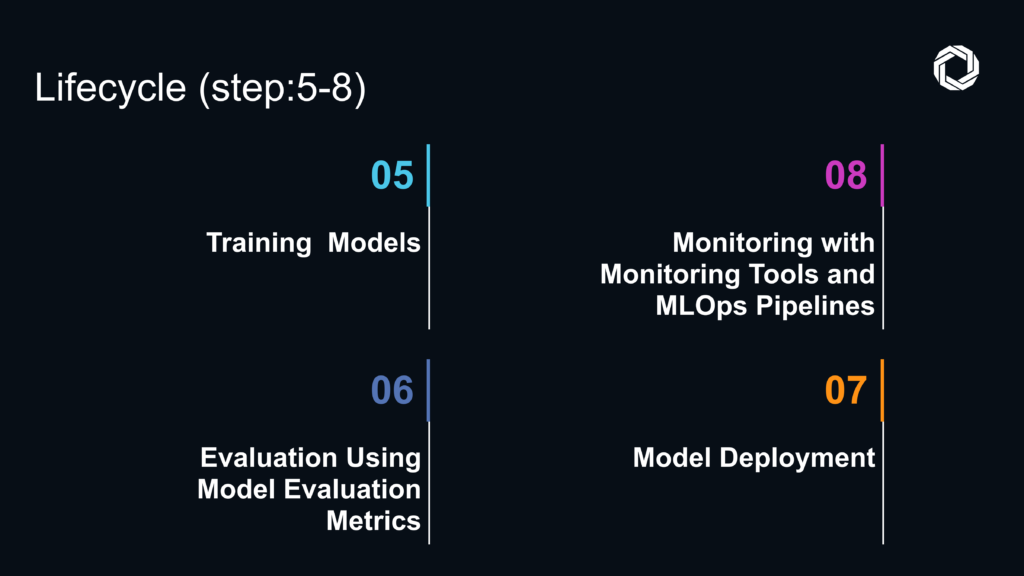


Published May 10, 2025 • 3 min

Let’s explore each phase of the machine learning model lifecycle, detailing how it transforms unstructured data into insights and automation that drive growth.

Problem Definition
The first and most important step in the machine learning step by step process is clearly defining the problem you aim to solve. This includes identifying the type of ML task: is it supervised, unsupervised learning, or something in between?
A well-scoped question such as “Will this customer churn within 30 days?” provides clarity for model evaluation and data preparation.
Data Collection for Machine Learning
The phrase “garbage in, garbage out” applies directly to ML. Collecting clean, diverse, and representative data is essential. You may source this from databases, CRMs, APIs, IoT devices, and even social media.
Tools and techniques for smart data collection for machine learning can improve the effectiveness of downstream processes.
Feature Engineering Techniques
With clean data in hand, the next step is feature engineering—the process of selecting or creating meaningful variables that help the model make better predictions.
Well-crafted features often determine whether a model succeeds or fails.
Data Preprocessing in Machine Learning
Real-world data is rarely perfect. The preprocessing phase ensures that your input is clean, structured, and suitable for modeling.
Key tasks include:
In many cases, Python tools are used for data preprocessing in machine learning python projects. High-quality preprocessing lays the foundation for unbiased and accurate results.

Training Machine Learning Models
Now the ML magic begins. You choose an algorithm and begin training machine learning model using the curated dataset.
Best practices include:
This step is critical to build an accurate and generalizable model.
Evaluation Using Model Evaluation Metrics
Training alone isn’t enough—your model needs to perform well on new, unseen data.
Assess model performance with metrics such as:
Use visual tools like ROC curves and precision-recall plots to better understand your model evaluation metrics.
Model Deployment in Production
Once validated, your model is ready for deployment. This means integrating it into real systems so it can make predictions in live environments.
Deployment may include:
This stage is where the model begins delivering business value.
Monitoring with Machine Learning Monitoring Tools and MLOps Pipelines
Deployed models don’t last forever—they degrade due to data drift, changing user behavior, or new patterns.
To maintain performance:
Establishing robust mlops pipeline diagram helps automate the maintenance and scaling of ML initiatives.
The machine learning lifecycle is not a one-time process. It’s an iterative framework that balances technical execution with strategic thinking. From defining a business case to deploying and maintaining models, success depends on how well you align data, infrastructure, and goals.
This guide on how to build a machine learning model from scratch offers a foundational understanding for applying ML effectively in real-world business scenarios.
At Techlusion, we don’t just develop models—we create intelligent systems that solve real business problems. Our team specializes in end-to-end machine learning lifecycle implementations tailored to your goals. Whether you’re building your first model or scaling AI infrastructure, we’re here to guide you through each step of the journey.
🚀 Ready to harness the power of applications of machine learning in business?
Visit techlusion.io or drop us a message to explore how we can collaborate.